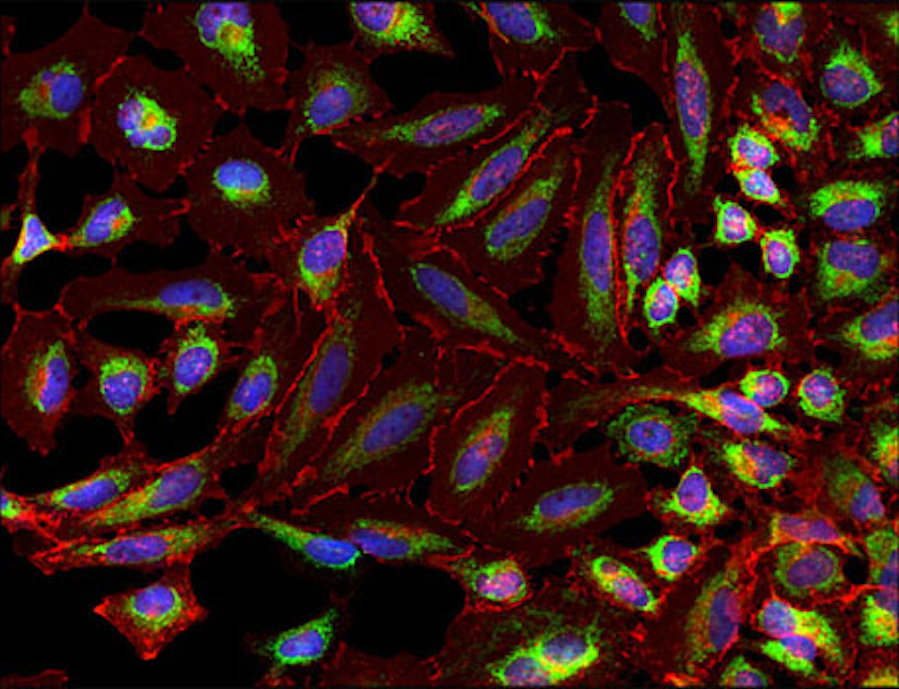
By Francesca Ceroni
In “Emergent properties at the DNA level” I shared how the prediction of the behaviour of DNA heterologous systems (i.e. artificial DNA fragments that are non-native for the cell) from their individual components is still a challenge in cell engineering. Here, I would like to move from the DNA level to the cellular level.
As I set out before, DNA carries the instructions (genes) that cells need to produce proteins, molecules used by the cells for growth, movement and interaction with other cells. For proteins to be produced, genes need to be read by the cell, exactly as a computer does with program instructions. Since many therapeutics and drugs are proteins, cell engineers take advantage of the cell’s natural ability to produce proteins from DNA in order to produce large quantities of proteins of interest by providing cells with the starting DNA material.
From a superficial perspective, cells could be seen as simple factories that can be exploited for production without thinking too much about how the DNA that we provide and the cells themselves interact. However, a plethora of experimental research now tells us that they are actually interlinked and that the cellular context creates dependencies impacting both the behaviour of the DNA systems and of the cells, giving rise to deviations from what is expected.
Researchers have observed, for example, that resource competition impacts cells and, in turn, the DNA. When foreign DNA is present in cells, it takes up intracellular resources, the building blocks of protein production. This leads to a decrease of the resources available for cellular functions, leading to decreased cell growth and production. This “burden effect1”, feeds back onto the construct, as it is a source of variability. For example, in 2009 Tan and colleagues2, observed that DNA-induced growth decrease in bacteria led to a gene expression pattern completely unexpected and different from predictions. The competition for cellular resources can give rise also to another context dependency, that can be associated to the so called retroactivity effect. Researchers have highlighted that when DNA systems are composed of more than one module, the different modules are subject to crosstalk leading to interference (we could call this “interaction”) among their gene expression patterns even when the systems are supposedly non-related.
While all of these “deviations” from the expected can represent a problem if we want to apply cell engineering to important areas like the production of drugs inside the body, or the removal of contaminants from the environment, I believe they also open up possibilities for us to acquire a different perspective on natural systems. A recent paper3 has actually proposed that instead of only looking at the behaviour of the heterologous DNA and measuring it, we should probably start considering the entire cell-DNA system, thus including the interaction in our analysis, as this expands the realm of possible effects we can obtain. When thinking about this phenomenon, I can’t avoid thinking about Prof. Denis Noble’s take on causality levels in biological systems. It is not necessarily true that information flows from the DNA to the protein in a reductionist way; causality levels, and feedbacks and crosstalk are examples, can lead to the emergence of given biological properties that are not easily predictable, unless we consider interaction and connection among the parts.
References
1. Ceroni, F., Algar, R., Stan, GB. et al. Quantifying cellular capacity identifies gene expression designs with reduced burden. Nat Methods 12, 415–418 (2015).
2. Tan C, Marguet P, You L. Emergent bistability by a growth-modulating positive feedback circuit. Nat Chem Biol. 5(11):842-8 (2009).
3. Tas H, Grozinger L, Stoof R, de Lorenzo V, Goñi-Moreno Á. Contextual dependencies expand the re-usability of genetic inverters. Nat Commun. 13;12(1):355 (2021).
Francesca Ceroni is a Lecturer in the Department of Chemical Engineering and a member of the Imperial College Centre for Synthetic Biology at Imperial College London, UK.